This set from Arrow Video is currently available for purchase.
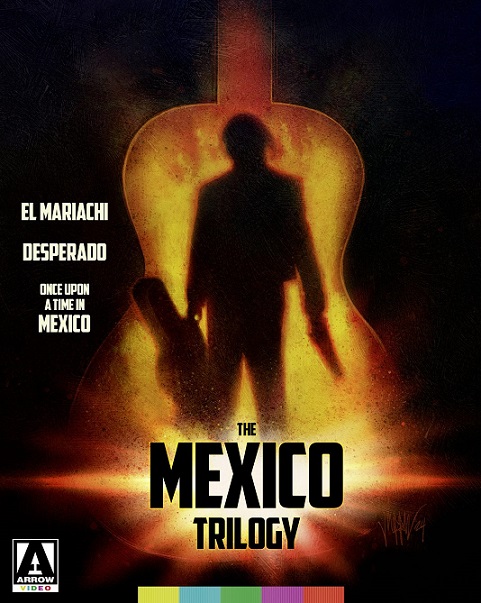
It’s hard to believe that it has been more than 30 years since Robert Rodriguez appeared on the filmmaking scene. His shot on 16mm debut feature, El Mariachi, gained a lot of attention in the press for its dynamic action and visuals that were all created by the independent filmmaker on a budget of $7000. Sony Pictures quickly picked up the distribution rights and the little movie earned itself a theatrical release. While it wasn’t a massive box office hit, it was a picture that seemingly everyone caught up with on video. The movie launched Rodriguez’s career and he eventually was persuaded to make two follow-ups about the titular gun-toting guitar player.
Arrow Video is now presenting all three pictures in a wonderful box set called The Mariachi Trilogy. It contains El Mariachi, Desperado and Once Upon a Time in Mexico. Curiously, the first and third pictures in the box are presented only on Blu-ray, while the second appears in 4K Ultra HD and Blu-ray. That may seem initially strange, but it makes sense and really has to do with how the movies were shot. Make no mistake, the images on display for all three titles are spectacular and the set is amazing from beginning to end.
El Mariachi follows a Mexican guitar player known only as “El Mariachi” (Carlos Gallardo, who also served as producer), whose only dream is to make a living playing music just like his father. Unfortunately, he is immediately mistaken for a similarly dressed criminal who plans on murdering a local drug lord. This major crime figure wants the gun-toting character wiped out and sends all manner of thugs to eliminate the problem. After their mistake, El Mariachi is hunted in a lengthy and violent pursuit. In self-defense, the hero ends up fighting back and taking down several bad guys. He also falls for a helpful bar owner, only to learn that the drug lord owns the bar and has eyes for her as well.
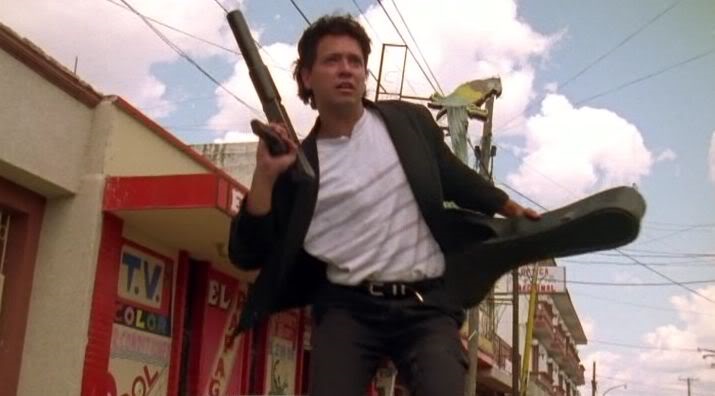
The film was made for next-to-no money, but it is creatively filmed, fast-paced and extremely high energy, making it a surprising and enjoyable action film. There are plenty of impressive stunts and the real Mexican locales (it was primarily shot in Ciudad Acuña on the border of Mexico and Texas) are also unique and visually interesting. The camera often races alongside El Mariachi while others are in pursuit, which helps viewers identify with the character. Lead actor Gallardo is also likable and sells the dark sense of humor running through much of the film.
The Blu-ray definitely looks superior to previous editions. While 16mm is never going to appear pristine, the images are crisper here and one can see more details in the backdrops, really getting a feel for the town of Ciudad Acuña. This is as good as the film can possibly look and there is no reason to need any more visual information than what is available on this Blu-ray.
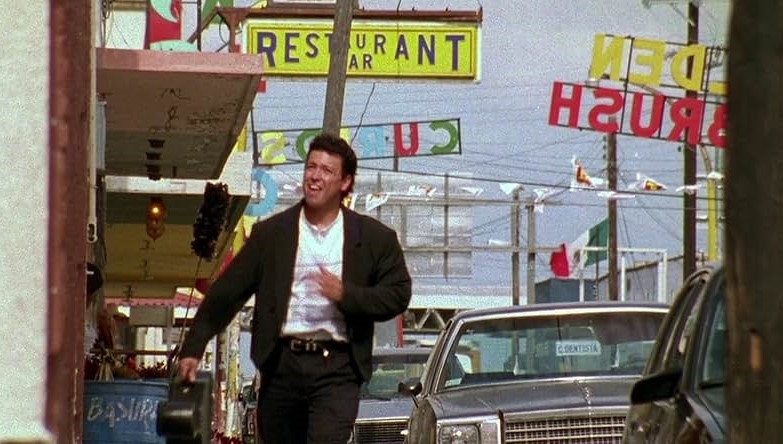
Extras are also exceptional. When the movie was originally released, it came with some great bonuses, including a “Ten Minute Film School” in which Rodriguez explains his shooting and editing methods, advising aspiring filmmakers on how they can achieve their cinematic dreams on a limited budget. His process involves a lot of shooting and zooming in and out on actors in a single shot to get a variety of angles without wasting footage. Of course, he had to know exactly what he needed and essentially cut the film in his head while shooting so that he wouldn’t miss a part of the shot in a preferred angle, but it worked out. This feature is included on the Blu-ray, along with other archival plusses like a commentary, a short film from the director made only a year earlier, and publicity materials.
What is really wonderful is the new bonus material. Rodriguez introduces the picture and notes that when he was in university, he befriended Gallardo and began traveling with his new pal to the man’s hometown in Mexico. There, they began making short films together. When Gallardo showed him a Mexican action movie that was very popular at the time, Rodriguez insisted that they could make a better film.
The two begged and borrowed to shoot their movie. Gallardo was well known in town and many locals were happy to help them out. The director also mentions how they managed to borrow guns and weapons from the police department for the movie and use them for the shoot. These stories are, at times, hilarious and it seems as though the producer/star was a very charismatic individual who was an essential part of getting the movie made.
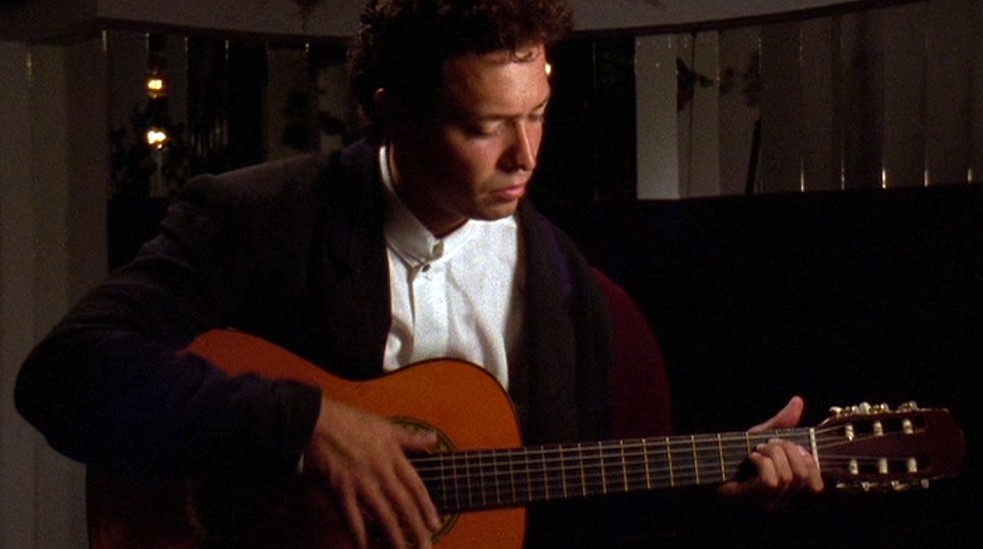
There is also a recently recorded interview with Gallardo, who discusses his duties and how the project was eventually sold to a distributor. His insights are equally entertaining and insightful. He credits Rodriguez for holding out for the best possible offer from studios (the producer/star admits that there was a lot of interest and he would have been happy to have just accepted the first offer from anyone, anywhere). Gallardo is also gracious about passing the mantle on to Antonio Banderas for the sequels, being pleased to make a brief appearance in the follow-up and continue to work as producer on many of Rodriguez’s later films.
Additionally, there is a new featurette on the music of the film. Since Rodriguez had spent time at the University of Texas in Austin, he knew local musicians and asked around, assigning bits and pieces of the score to a group of friends and acquaintances. They all describe which bits they were assigned and their experiences putting the memorable music together.
Desperado came about a couple of years later in 1995. This effort was shot in 35mm for a larger, but not enormous sum of money (reported to be $7 million). The final product was an even more fantastic and exaggerated tale that featured incredible shootouts and a stunning cast.
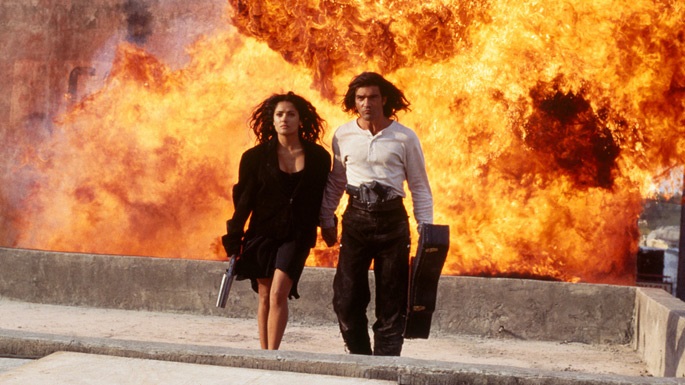
The gun-toting guitar player known as Manito “El Mariachi” (Antonio Banderas) is reintroduced at the beginning of the film in a mythic story that subtly alters some aspects of his past. Now a seasoned vigilante, El Mariachi is looking for Cesar “Bucho” (Joaquim de Almeida), the drug lord whose goon murdered his love (in the first film). “Bucho” is also looking for El Mariachi, sending an army of thugs to find and murder his enemy. The protagonist is saved during one encounter by Carolina (Salma Hayek) and the two go on the run together. They cross paths with a threatening assassin named Navajas (Danny Trejo) and all sorts of other characters (including Steve Buscemi, Cheech Marin, and Quentin Tarantino) while doing battle with “Bucho”.
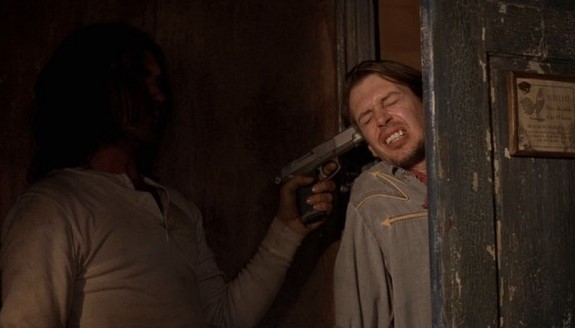
As mentioned, everything about this title is bigger and better. The cast is incredible and all are or were shortly to become major stars, so the performances are all better than expected for this type of feature. Additionally, the supporting parts from the likes of Buscemi, Marin and Tarantino are hilarious as well, with each performer possessing great comic timing. Of course, the action scenes are top notch, with grander explosions and duels, more extreme and creative camera angles, all of which adds to the sense of fun.
The 4K Ultra HD upgrade is spectacular. This new transfer was created from the original camera negative. Everything on the screen looks phenomenal and every shot is packed with detail. Curiously enough, this follow up was also shot in Ciudad Acuña at some of the very same locations. As good as the other films in this set look, this is perhaps the most striking presentation. It’s an absolutely incredible looking image. And if you haven’t picked up a 4K Ultra HD player yet, the Blu-ray is notable too.
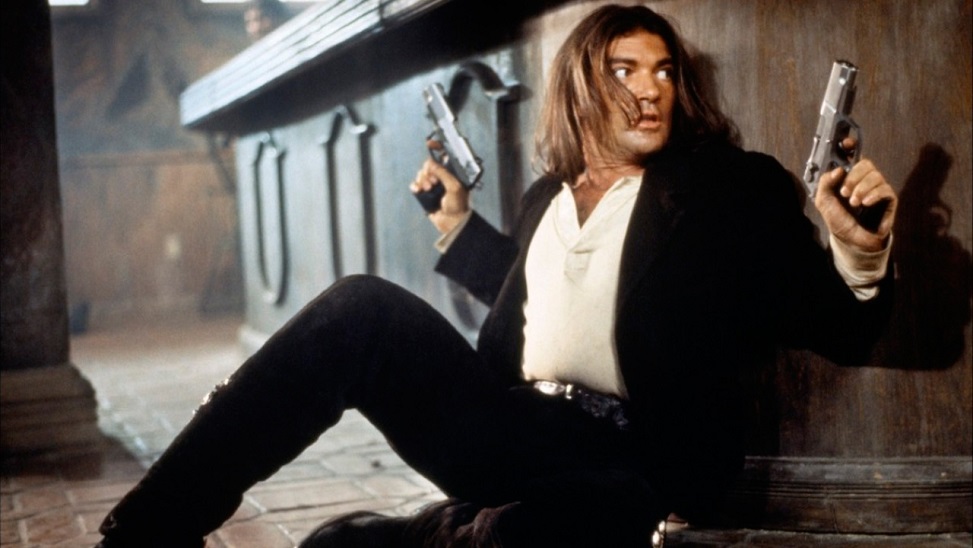
In the introduction for this picture, Rodriguez notes that another “El Mariachi” film was inevitable and that he had already thought about whether it would be a bigger-budget remake or a sequel. When Sony Pictures gave him their conditions for the new movie, that’s when it became a combo of both.
Rodriguez notes that Banderas was a new performer generating buzz for his work in dramatic pictures. He was pleasantly surprised that Banderas was excited to make an action picture and notes he was wonderful to work with. Hayek was a Mexican soap actress who was trying to make her break in American films. While studio bosses were initially skeptical of her, once they saw footage of the two leads together, they were thrilled and largely left the writer/director alone. Viewers learn that Rodriguez shot in exactly the same manner as El Mariachi, changing angles and using zooms in the middle of takes. It was all the same, just with more elaborate set pieces.
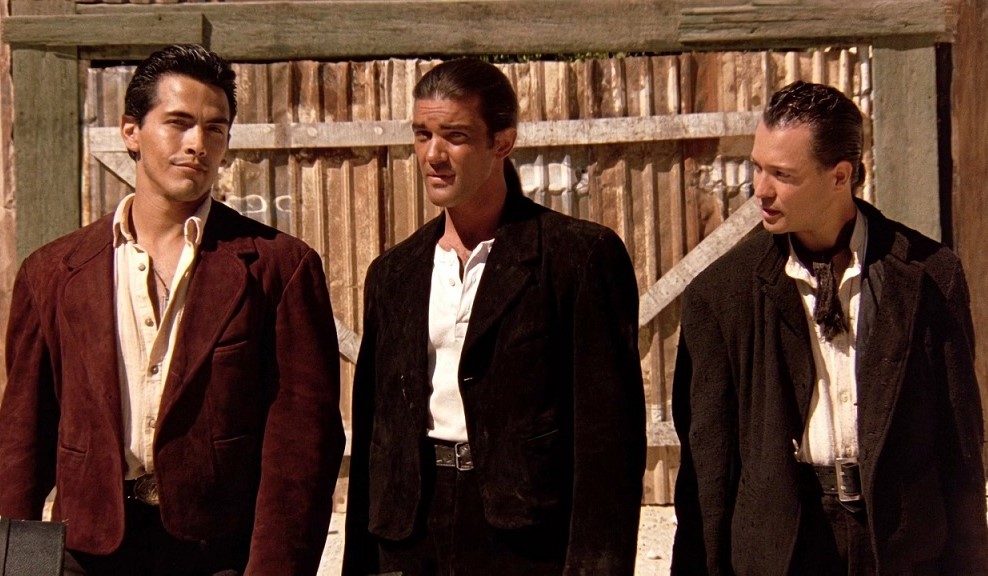
You’ll get more enjoyable stories from the Rodriguez commentary, as well as an archival featurette on the shooting of a memorable gunfight in the movie. Additionally, there are new interviews with the producer, stunt coordinator and special effects coordinator. They all describe Rodriguez’s rapid shooting in Mexico and the sense of excitement and energy it created. The disc also contains a new appreciation for the movie from director Gareth Evans (The Raid) who talks about the big influence this picture had on his career.
Once Upon a Time in Mexico, the final feature in the series, arriving 8 years later. The movie is every bit as crazy as its predecessors, but also offered a larger scope and a few fresh characters. In this story, El Mariachi (Antonio Banderas) and wife Carolina (Salma Hayek) face off against General Emiliano Marquez (Gerardo Vigil), a crooked leader of the Mexican Army who has been hired by a drug kingpin (Willem Dafoe) to assassinate the President of Mexico (Pedro Armendáriz Jr.).
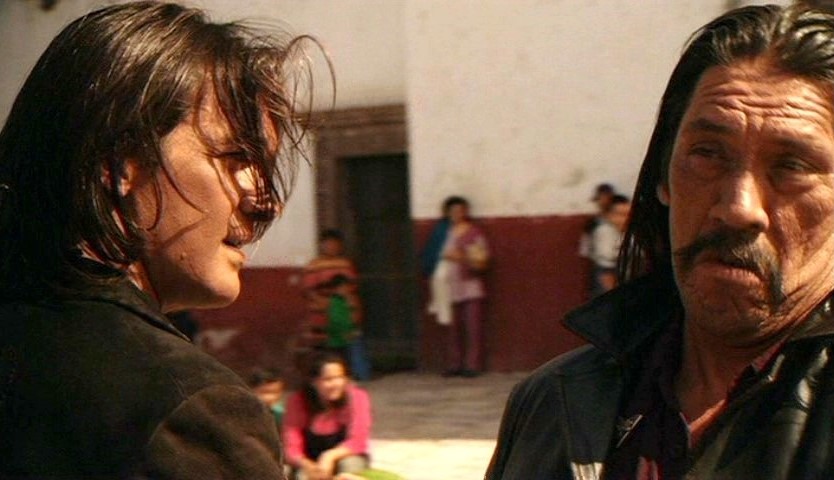
The almost equally shady CIA officer Sheldon Jeffrey Sands (Johnny Depp) puts pressure separately on El Mariachi and former FBI agent Jorge Ramirez (Reuben Blades) to eliminate Marquez before he succeeds. Over the course of the film, the main characters interact with all sorts of underworld figures and government types (played by Mickey Rourke, Eva Mendes, Danny Trejo and Cheech Marin) and even more mariachis (including Enrique Iglesias).
The film is almost overstuffed with characters and subplots, but it is so unpredictable and the cast is so much fun to watch that it doesn’t matter. Banderas is still the central figure here and delivers the action, but there are some fantastic supporting roles. Blades makes a big impression serving as the heart of the story. And Depp really stands out in this film as the CIA agent. Sanders is a pretty horrible individual, but the character has so many great moments and lines that the movie perks up even more whenever he appears on the screen. This is a truly wild ride that is just as strong as its immediate predecessor.
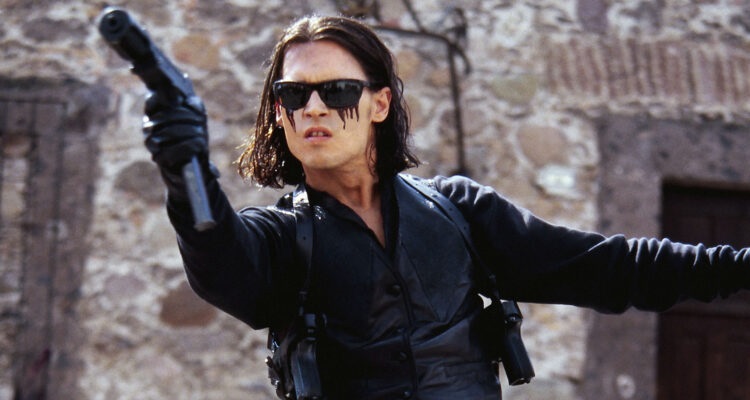
This picture arrives on Blu-ray and boasts a crystal-clear image that looks perfect upconverted on a 4K player. The reasons why it isn’t appearing on 4K Ultra HD become clear in the extras, but rest assured, this is as good as the picture can look.
Once again, there is an incredibly informative introduction from Rodriguez that sheds light on the film. With the 2001 Screen Actors Guild strike fast approaching, the director had visited George Lucas, who was working with high-definition digital video on Star Wars: Episode II: Attack of the Clones. Rodriguez was blown away by the technology, believing it would revolutionize and simplify the shooting process. He contacted Miramax and said that he could shoot another El Mariachi movie immediately if they gave him the chance.
The studio agreed, and a stunned Rodriguez wrote the script and got the cast together to start the production about two weeks after getting studio approval. It was shot on video in 1080p (which is very slightly lower than 2K, hence Blu-ray being the optimal format for this film).
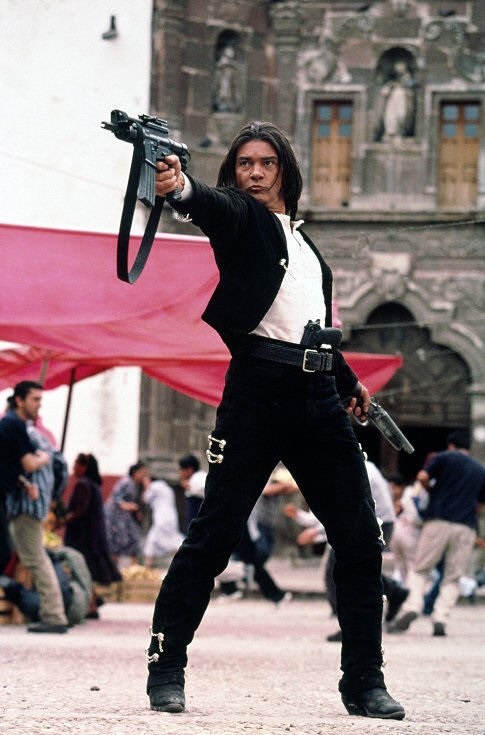
He states there was a lot of improvisation on set and a very short schedule to put it all together. Rodriguez notes that Miramax was floored and never expected him to even begin, let alone finish, principal photography by the time the strike began. Then, the filmmaker left to work on other projects for about a year or so before coming back, editing and locking the picture and getting it ready for release. He also talks about scoring the picture himself. All of the details about this production are amazing to hear.
There is also an entertaining interview with the visual effects editor who discusses meeting Rodriguez and working for him. And the set comes with a recent talk from Rodriguez on video being the optimal shooting format (whether you agree or disagree, it’s an interesting take).
Most of the archival bonuses from previous releases are also included here. You’ll get a director commentary, eight deleted scenes with additional commentary from Rodriguez, another “Film School” featurette, more bits that include a cooking class, a special on the filmmaker’s studio, a special on the character arc of El Mariachi over the series. Promo materials and other bonuses round out the excellent package.
And if that wasn’t enough, the set comes with an illustrated collector’s booklet with writing on the movies, reversible sleeves with original and newly commissioned artwork (as well as double-sided posters) and another poster featuring Rodriguez’s original poster concept for El Mariachi.
Robert Rodriguez was part of the independent scene and also was one of the first movie makers to embrace shooting features on video. His action films have a unique fresh voice and they are an absolute blast to watch. Once again, Arrow Video has done an incredible job putting these pictures together for this fantastic set. If you’re an action movie fan, you need to pick The Mexico Trilogy set up as soon as you can!


